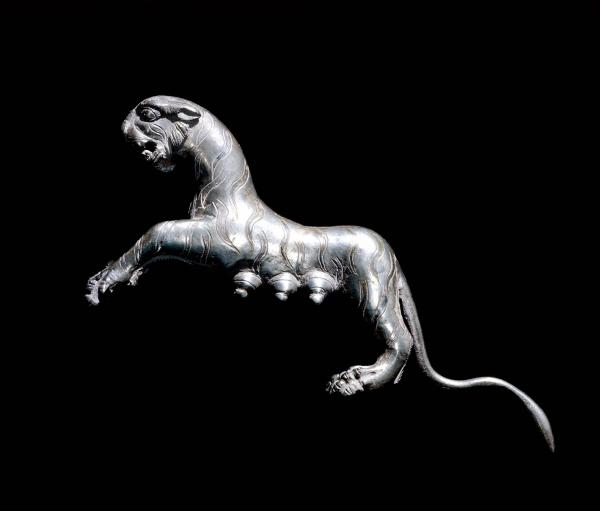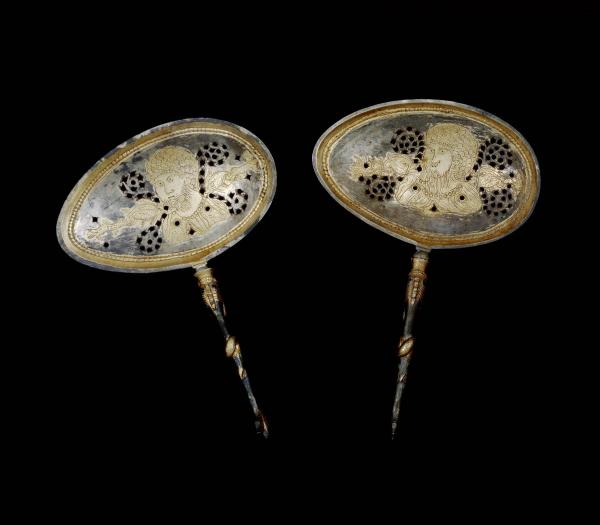The Hoxne treasure
In 1992 Eric Lawes found pieces of Roman gold jewellery and coins with a metal detector in a field near Hoxne in East Anglia. He notified the police and the following day local archaeologists carried out a professional rescue excavation on site. They were able to precisely identify the position of a large part of the hoard and as a result they were also able to determine the circumstances and the way the hoard was hidden. The find was lifted together with the soil and transported to the British Museum where exploration continued.
A total of more than 15,000 gold, silver and bronze coins, 29 items of gold jewellery (their weight being approximately 1 kg), 12 items of silver tableware, 98 various silver spoons and nine silver toiletry items were discovered, as well as ivory, bone and wooden fragments, textile and leather remnants, and items made of iron.
On the basis of the coins minted the latest, the Hoxne treasure must have been hidden in a thick walled oak box of approximately 60 x 45 x 30 cm in around 410, as was verified by scientific analyses. The silver dishes were wrapped in textile, the smaller silver items and jewellery were carefully arranged and the gold coins were probably put in leather bags and they were all placed in the box, while the silver coins were simply poured in, thus filling the gaps. An exquisitely carved ivory toiletry box was put next to them and certain pieces in a small bone inlayed wooden chest were put into the large box. The fact that the objects were so carefully arranged in the box indicates that hiding them was aimed at preservation, i.e. the hoard must have been personal or family property. Researchers were able to identify nine different names with the help of inscriptions on the objects. No late Roman residential building has been found near Hoxne so far, thus the conclusion may be drawn that its owners probably brought the treasure to the hiding spot from afar.
The total weight of the hoard is approximately 27 kilograms, its gold value amounting to approximately 5.214 kilograms.
Read more about the treasure:
The Hoxne Hoard: How a Mislaid Hammer Led to the Largest Roman Treasure in Britain
The Hoxne Hoard: Finding Buried Treasure Thanks To A Lost Hammer
The Hoxne Hoard by Roger Bland of the British Museum (videó)
Bibliography:
Johns, C.: The Hoxne Late Roman Treasure: Gold jewellery and silver plate, London 2010


